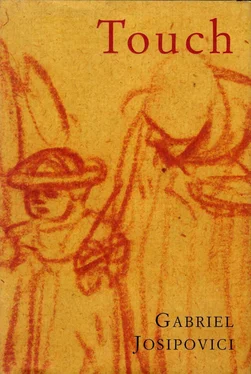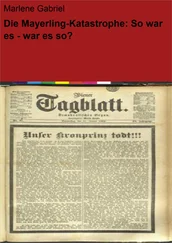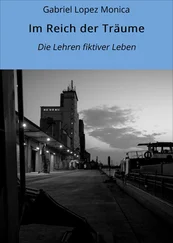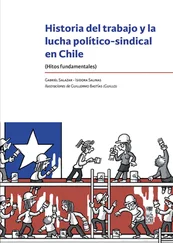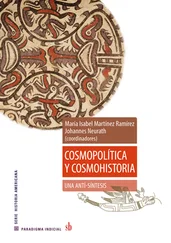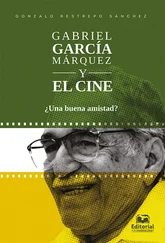Gabriel Josipovici - Touch
Здесь есть возможность читать онлайн «Gabriel Josipovici - Touch» весь текст электронной книги совершенно бесплатно (целиком полную версию без сокращений). В некоторых случаях можно слушать аудио, скачать через торрент в формате fb2 и присутствует краткое содержание. Год выпуска: 1996, ISBN: 1996, Издательство: Yale University Press, Жанр: Современная проза, на английском языке. Описание произведения, (предисловие) а так же отзывы посетителей доступны на портале библиотеки ЛибКат.
- Название:Touch
- Автор:
- Издательство:Yale University Press
- Жанр:
- Год:1996
- ISBN:0300066902
- Рейтинг книги:5 / 5. Голосов: 1
-
Избранное:Добавить в избранное
- Отзывы:
-
Ваша оценка:
- 100
- 1
- 2
- 3
- 4
- 5
Touch: краткое содержание, описание и аннотация
Предлагаем к чтению аннотацию, описание, краткое содержание или предисловие (зависит от того, что написал сам автор книги «Touch»). Если вы не нашли необходимую информацию о книге — напишите в комментариях, мы постараемся отыскать её.
Touch — читать онлайн бесплатно полную книгу (весь текст) целиком
Ниже представлен текст книги, разбитый по страницам. Система сохранения места последней прочитанной страницы, позволяет с удобством читать онлайн бесплатно книгу «Touch», без необходимости каждый раз заново искать на чём Вы остановились. Поставьте закладку, и сможете в любой момент перейти на страницу, на которой закончили чтение.
Интервал:
Закладка:
Sir Gawain and the Green Knight hinges on the difference between, on the one hand, a pentangle and an image of Mary inscribed on Gawain's shield, and, on the other, a girdle which, at a moment of crisis, is offered him by a beautiful lady and which, she claims, has the magical property of being able to protect one from death. The poet explains that the pentangle or ‘endless knot’ signifies, among other things, the five wounds of Christ and the five virtues of ‘fraunchyse’, ‘felawschyp’, ‘clanness’ (i.e. purity), ‘cortasye’ and ‘pite’ (pity and piety both). Although it is what Coleridge would call a natural symbol, meaning that we just have to look at it to sense its meaning (five evenly balanced elements held in tension), it has also been ‘set’ by King Solomon in ancient time, meaning that Solomon has given it a meaning which society has endorsed. The girdle on the other hand belongs to a lady he doesn't know, who gives it to Gawain with the assurance that it possesses life-preserving qualities, though neither its appearance nor any of the founding stories of the society could have alerted us to this beforehand — it is, after all, merely an item of her clothing. The poem turns on which of these objects possesses more power and on the kind of power each possesses.
The narrative opens in ambiguity, as it will go on. Arthur and his court are celebrating Christmas, the dark time of the year made bearable by the birth of the Saviour, one of whose key sayings is that only those who become as little children will enter the Kingdom of Heaven. But if Christmas is the ritual celebration of the child in all of us, the question always remains where to draw the line between the child like and the chil dish , a grey area the poet exploits so as to leave us uncertain about the qualities of Arthur and his court as they playfully celebrate the feast and wait impatiently for some adventure to take place, some unexpected event which will light up the short dark days: are they only waiting to be entertained, waiting for the medieval equivalent of the conjuror to turn up, or are they waiting to witness a miracle akin to Christ's birth, in which His resurrection is already implicit? Can the two kinds of events even be clearly separated?
Enter the Green Knight on a great horse and his challenge to the court: let one of your knights strike off my head here and now, but be prepared to submit to the return blow in a year's time. Gawain takes up the challenge, chops off the knight's head, and then he and the court watch in amazement as the knight picks up the severed head, which now speaks, reminding Gawain of their rendezvous a year hence, and then the knight rides away, still holding his severed head in his hand. Are we witnessing a conjuror or a miracle? And, if the latter, is it a benign analogy of Christ's own miraculous resurrection or its demonic parody?
Gawain arms himself and rides out into the unknown, holding before him his shield with its image of the pentangle and the Mother of God. Will they be enough to protect him when the moment comes, as it assuredly will? The answer given by this subtle and sophisticated poet is not that it will or it won't, but that, when the crunch comes, Gawain fears it won't. For when, with the prospect of a meeting with the Green Knight looming, the seductive wife of his host offers him her girdle, which she says will protect him from death, he succumbs to the temptation, even though it will mean lying to his host. Mary and the pentangle are all very well, but who can be sure that they will offer the same immediate protection? They may be profoundly meaningful symbolically, but what is needed at the moment is not a symbol but effective practical help, and this the lady seems to be offering. So Gawain dons the girdle, saying nothing either to his host (to whom he had promised to return each evening whatever the lady gave him during the day) or to the priest to whom he goes for confession before setting out finally to meet the Green Knight. *This, as both the knight and Arthur, when Gawain eventually returns to court, tell him, was a perfectly understandable and human, though reprehensible, weakness. Gawain, however, once his actions have been revealed, is overwhelmed by guilt and remorse at having succumbed. He cannot face the fact, it seems, that the world will know that he is not the perfect Christian knight everyone took him to be. Even less, we suspect, can he face the fact that he is not as perfect as he himself had imagined himself to be. It is going to take a brilliant and subtle act of statesmanship on Arthur's part to correct him and return him once again to the community of his fellows.
How does Arthur do this? Gawain returns to the court, after his encounter with the Green Knight, in which his life has been spared but his neck just ‘nicked’ once, to chastise him for taking the girdle without saying anything about it, wearing the girdle, now the sign of his sin, as a baldric, visible to all. In a highly emotional manner he recounts the story of his temptation, his fall and his present contrition. In response Arthur merely orders the whole court to wear similar girdles in similar fashion. By this simple act Arthur performs for the girdle what Solomon was said to have done for the pentangle, he ‘sets’ it, giving it a public meaning. But what kind of a meaning is it? Arthur's action seems to suggest that he wants Gawain to know that he thinks him no more guilty than any of the other courtiers. At the same time, though, his action is a tacit reproof to Gawain, implying that he is no more special than any other member of the court, and that in asserting that he is specially tainted he is committing the sin of despair, which is the mirror image of the sin of pride, for if the proud man sets himself above all others, the despairing man sets himself below all others, asserting in effect that he alone is not worthy of Christ's mercy. But no one, Arthur's action suggests, is beyond such mercy, we are all part of one fellowship, and his tacit injunction to Gawain is therefore akin to Father Zosima's quiet remark to Fyodor Karamazov: ‘Do not be so ashamed of yourself, for that is at the root of it all.’
The poet does not labour the point. Indeed, the whole of this rich climactic scene takes up less than twenty lines. Yet with extraordinary sophistication he has uncovered the springs of human narcissism, the ways we lie to ourselves in order to preserve the image we have of ourselves and the ways in which we try to maintain that image even at the cost of extreme self-mortification. For, as Dostoevsky understood so well, self-mortification is usually only the sign of a refusal to face up to what one really is, which is in turn the result of a feeling that there is no one to pardon us.
The poet also shows us what happens when the symbolic systems we live by come under pressure. At the moment of crisis, with his encounter with the Green Knight suddenly imminent, Gawain instinctively opts for the magic girdle, as so many, for example, have opted for collaboration with the enemy when under occupation. The lesson he has to learn is that he should have trusted those symbols of a world in which he professed to believe, and no doubt imagined he believed, the pentangle and Mary's image, and that his real danger arose only when he surrendered that trust. But the poem takes up no moralistic stance, it merely shows the consequences of the action Gawain actually chose, just as Proust merely shows what happens when Marcel tries to hold on to his mother. Neither writer suggests that his protagonist, in the course of living through the dense web that is his life, could have done otherwise, though both recognise that it would have been better for them had they not done what they did. Now, they will have to live with the consequences for the rest of their lives.
Читать дальшеИнтервал:
Закладка:
Похожие книги на «Touch»
Представляем Вашему вниманию похожие книги на «Touch» списком для выбора. Мы отобрали схожую по названию и смыслу литературу в надежде предоставить читателям больше вариантов отыскать новые, интересные, ещё непрочитанные произведения.
Обсуждение, отзывы о книге «Touch» и просто собственные мнения читателей. Оставьте ваши комментарии, напишите, что Вы думаете о произведении, его смысле или главных героях. Укажите что конкретно понравилось, а что нет, и почему Вы так считаете.
